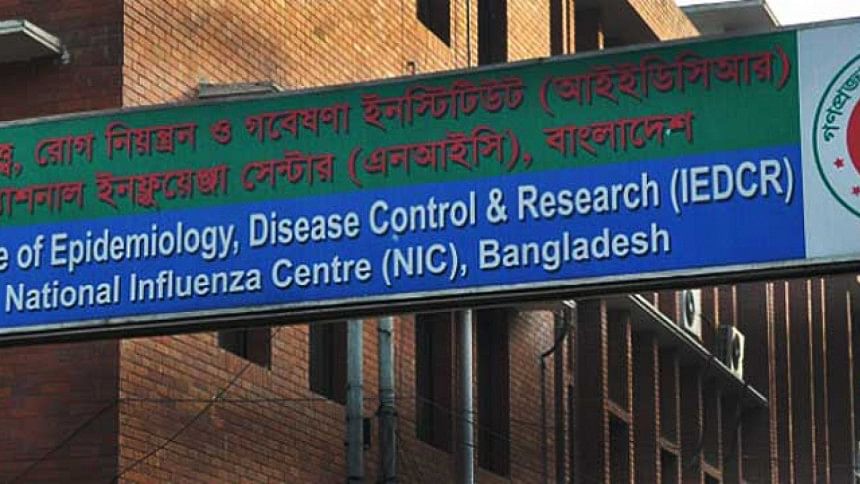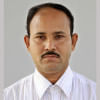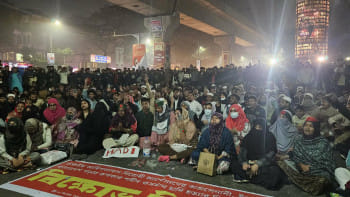IEDCR was ‘slow to act’

Measures taken by the IEDCR following the detection of three coronavirus cases have lately raised some concerns.
At a press briefing on March 8, the Institute of Epidemiology Disease Control and Research announced the first confirmed coronavirus cases in the country. It said three Bangladeshis -- two of them Italy returnees -- were found to have been infected with the virus.
It also said three others, believed to have come in close contact with the infected ones, were quarantined at hospital while another was self-quarantined at home.
Then what about the other passengers of the two flights that carried the two Italy returnees to the country and those the two met at the Dhaka airport and later?
The Daily Star learnt that the IEDCR sought information on some passengers of the flights, not all of them, and the IEDCR move came only on Monday, almost two days after the three were tested coronavirus positive.
Besides, until Tuesday, the IEDCR could not trace all the people who came in contact with the three in Bangladesh, said insiders at the IEDCR and the airport.
One of the Italy returnees landed at Hazrat Shahjalal International Airport (HSIA) on February 26, said one of his relatives and sources at the airport.
His wife then contracted the virus.
The Daily Star can also confirm that the man went to a local diagnostic centre in his hometown before being tested coronavirus positive.
But these correspondents could not confirm whether anyone from the diagnostic centre has been quarantined.
The other Italy returnee came to the country in a flight in the first week of this month, said sources at the HSIA.
The sources said the IEDCR sought information on eight passengers from each of the two flights.
They also said none of the officials at the airport was in quarantine.
At the March 8 press conference, IEDCR Director Prof Meerjady Sabrina Flora did not disclose information on the other passengers of two flights over "privacy reasons".
Contacted by phone on Tuesday evening, she would not say whether any other passengers were quarantined.
"Why do you ask about personal information of the passengers? From my part, I cannot share any confidential information about anybody," Prof Flora told The Daily Star.
She, however, claimed that they had already traced all the people, feared to have come in close contact with the three coronavirus patients, in line with the WHO protocol.
In case any passenger of a flight is found to be infected, the protocol is to do follow-up on passengers who sat in the front and back rows of where the infected passenger was seated, she said.
THE CONFUSION
Responding to a question, the IEDCR chief claimed all the aircraft coming from coronavirus-hit countries were being disinfected.
"As per the international regulations, all airlines are bound to disinfect the aircraft properly and they do it," she said.
The Daily Star, however, came to know from airport sources that the flights which carried the two Italy returnees were not completely disinfected as of Tuesday.
"Biman Bangladesh Airlines is responsible for cleaning services for all other airlines. We held a meeting yesterday [Tuesday]. They would do it from now," Group Captain AHM Touhid-ul Ahsan, a director at the airport, told The Daily Star yesterday evening.
THE DANGER
Experts said the way IEDCR has so far handled the coronavirus situation indicates that many more people, who might have been exposed to the virus, are out of the radar.
They said passengers, especially those who sat close to the two infected passengers on the flights, and health, security and immigration staffers, involved in screening and immigration and ground handling process at the airport, were also vulnerable to the infection.
"The specialty of this new virus is rapid transmissibility. Those who came in close contact with the two infected people [passengers] all the way from Italy are vulnerable to be infected," Prof Saif Ullah Munshi, chairman of BSMMU's virology department, told The Daily Star last night.
He thinks all who came in contact with the infected ones should have been quarantined.
"Preparations should be taken taking the worst possible situation into consideration. Otherwise, there will be loopholes in the plan," he said.
Another expert, Prof Mozaherul Huq who served as the regional director of World Health Organisation (WHO), also opined that all the passengers and crew members of the two flights, people involved in immigration process, and others who came in close contact with the passengers might be infected.
"The virus can enter the internal system of the body through three paths -- mouth, nose and eyes. It is sure those passengers touched doorknobs, and the handles of stairs and toilets [of the aircraft]. So others are also vulnerable," he said.
"The severity of infection in a highly-populous country like Bangladesh has to be taken into consideration. The preparations must be taken in accordance with this. All other organisations need to be officially involved; otherwise, the government would not be able to tackle the situation," said the public health specialist, who founded the Public Health Foundation of Bangladesh.
He suggested that first concentration should be on the airport. "There should be a special establishment to screen all the passengers from any coronavirus-hit country; China has done this. The entire aircraft, its crew members and other staffers involved also must be freed from infection."
Prof Mahmudur Rahman, a former director of IEDCR, said, "In case a passenger comes from places like China's Wuhan or Italy in a direct flight, the person must go through stringent screening. If it is suggested by any technical committee, all the passengers of the flight should be kept quarantined."
"Except this issue [airport screening], we have many more important things such as early case detection, surveillance, looking for cases within the country, and whether we have the mechanism to take care of the patients," he added.


 For all latest news, follow The Daily Star's Google News channel.
For all latest news, follow The Daily Star's Google News channel. 








Comments